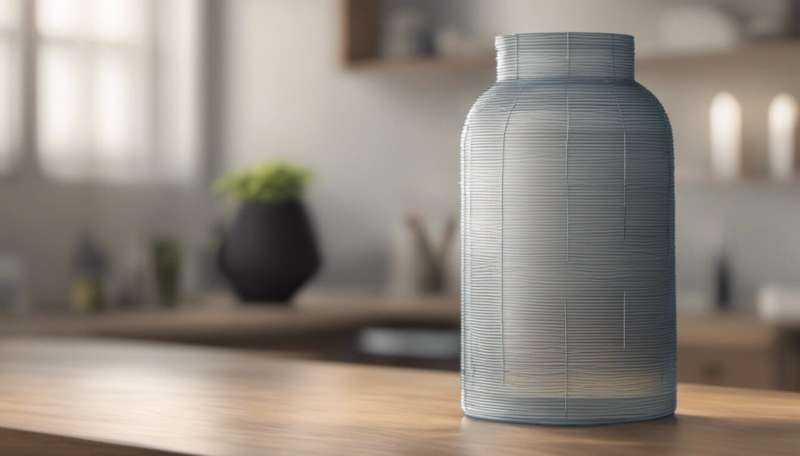
For students, as for all of us, life is a matter of balance, trade-offs and compromise. Studying for hours on end is unlikely to lead to best academic results. And it could have negative impacts on young people’s physical, mental and social well-being.
Our recent study found the best way for young people to spend their time was different for mental health than for physical health, and even more different for school-related outcomes. Students needed to spend more time sitting for best cognitive and academic performance, but physical activity trumped sitting time for best physical health. For best mental health, longer sleep time was most important.
It’s like a game of rock, paper, scissors with time use. So, what is the sweet spot, or as Goldilocks put it, the “just right” amount of study?
Using our study data for Australian children aged 11 and 12, we are developing a time-optimisation tool that allows the user to define their own mental, physical and cognitive health priorities. Once the priorities are set, the tool provides real-time updates on what the user’s estimated “Goldilocks day” looks like.
More study improves grades, but not as much as you think
Over 30 years of research shows that students doing more homework get better grades. However, extra study doesn’t make as much difference as people think. An American study found the average grades of high school boys increased by only about 1.5 percentage points for every extra hour of homework per school night.
What these sorts of studies don’t consider is that the relationship between time spent doing homework and academic achievement is unlikely to be linear. A high school boy doing an extra ten hours of homework per school night is unlikely to improve his grades by 15 percentage points.
There is a simple explanation for this: doing an extra ten hours of homework after school would mean students couldn’t go to bed until the early hours of the morning. Even if they could manage this for one day, it would be unsustainable over a week, let alone a month. In any case, adequate sleep is probably critical for memory consolidation.
As we all know, there are only 24 hours in a day. Students can’t devote more time to study without taking this time from other parts of their day. Excessive studying may become detrimental to learning ability when too much sleep time is lost.
Another US study found that, regardless of how long a student normally spent studying, sacrificing sleep to fit in more study led to learning problems on the following day. Among year 12s, cramming in an extra three hours of study almost doubled their academic problems. For example, students reported they “did not understand something taught in class” or “did poorly on a test, quiz or homework.”
Excessive study could also become unhelpful if it means students don’t have time to exercise. We know exercise is important for young people’s cognition, particularly their creative thinking, working memory and concentration.
On the one hand, then, more time spent studying is beneficial for grades. On the other hand, too much time spent studying is detrimental to grades.

We have to make trade-offs
Of course, how young people spend their time is not only important to their academic performance, but also to their health. Because what is the point of optimizing school grades if it means compromising physical, mental and social well-being? And throwing everything at academic performance means other aspects of health will suffer.
US sleep researchers found the ideal amount of sleep for for 15-year-old boys’ mental health was 8 hours 45 minutes a night, but for the best school results it was one hour less.
Clearly, to find the “Goldilocks Zone”—the optimal balance of study, exercise and sleep—we need to think about more than just school grades and academic achievement.
Looking for the Goldilocks Day
Based on our study findings, we realized the “Goldilocks Day” that was the best on average for all three domains of health (mental, physical and cognitive) would require compromises. Our optimisation algorithm estimated the Goldilocks Day with the best overall compromise for 11- to-12-year-olds. The breakdown was roughly:
- 10.5 hours of sleep
- 9.5 hours of sedentary behavior (such as sitting to study, chill out, eat and watch TV)
- 2.5 hours of light physical activity (chores, shopping)
- 1.5 hours of moderate-to-vigorous physical activity (sport, running).
We also recognized that people—or the same people at different times—have different priorities. Around exam time, academic performance may become someone’s highest priority. They may then wish to manage their time in a way that leads to better study results, but without completely neglecting their mental or physical health.
To better explore these trade-offs, we developed our time-use optimisation tool based on Australian data. Although only an early prototype, the tool shows there is no “one size fits all” solution to how young people should be spending their time. However, we can be confident the best solutions will involve a healthy balance across multiple daily activities.
Just like we talk about the benefits of a balanced diet, we should start talking about the benefits of balanced time use. The better equipped young people and those supporting them are to find their optimal daily balance of sleep, sedentary behaviors and physical activities, the better their learning outcomes will be, without compromising their health and well-being.
The Conversation
This article is republished from The Conversation under a Creative Commons license. Read the original article.![]()
Citation:
Tool helps find the best balance of good grades and well-being (2021, November 12)
retrieved 12 November 2021
from https://phys.org/news/2021-11-tool-good-grades-well-being.html
This document is subject to copyright. Apart from any fair dealing for the purpose of private study or research, no
part may be reproduced without the written permission. The content is provided for information purposes only.
